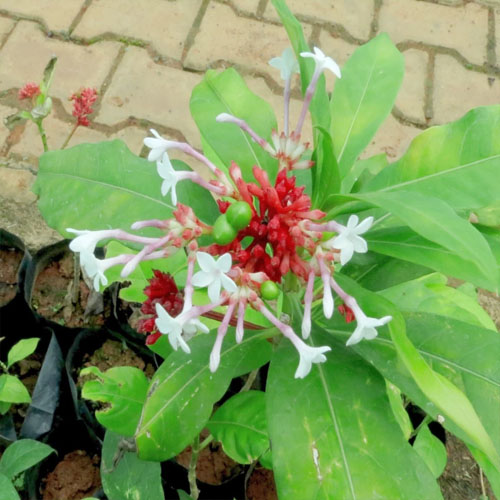Sarpagandha Plants
Sarpagandha (Rauwolfia serpentina) is a well-known medicinal plant, particularly in Ayurvedic and traditional Indian medicine. It is highly valued for its roots, which have been used for centuries to treat a variety of ailments.
Description:
- Botanical Name: Rauwolfia serpentina
- Family: Apocynaceae
- Common Names: Sarpagandha, Indian Snakeroot, Serpentine Root
- Appearance: Sarpagandha is a small, evergreen shrub that typically grows to about 60 cm (2 feet) in height. It has elliptical, glossy green leaves, white or pinkish flowers, and small red to black berries.
Growing Conditions:
- Climate: Sarpagandha thrives in tropical and subtropical climates. It prefers humid conditions with moderate to high rainfall and can tolerate partial shade.
- Soil: The plant grows best in well-drained loamy or sandy soil rich in organic matter, with a pH of 6 to 7.5.
- Watering: Regular watering is important, especially during dry periods. However, the soil should not be waterlogged, as this can cause root rot.
Cultivation:
- Propagation: Sarpagandha is usually propagated through seeds, though it can also be grown from cuttings. The seeds require warm, moist conditions to germinate.


